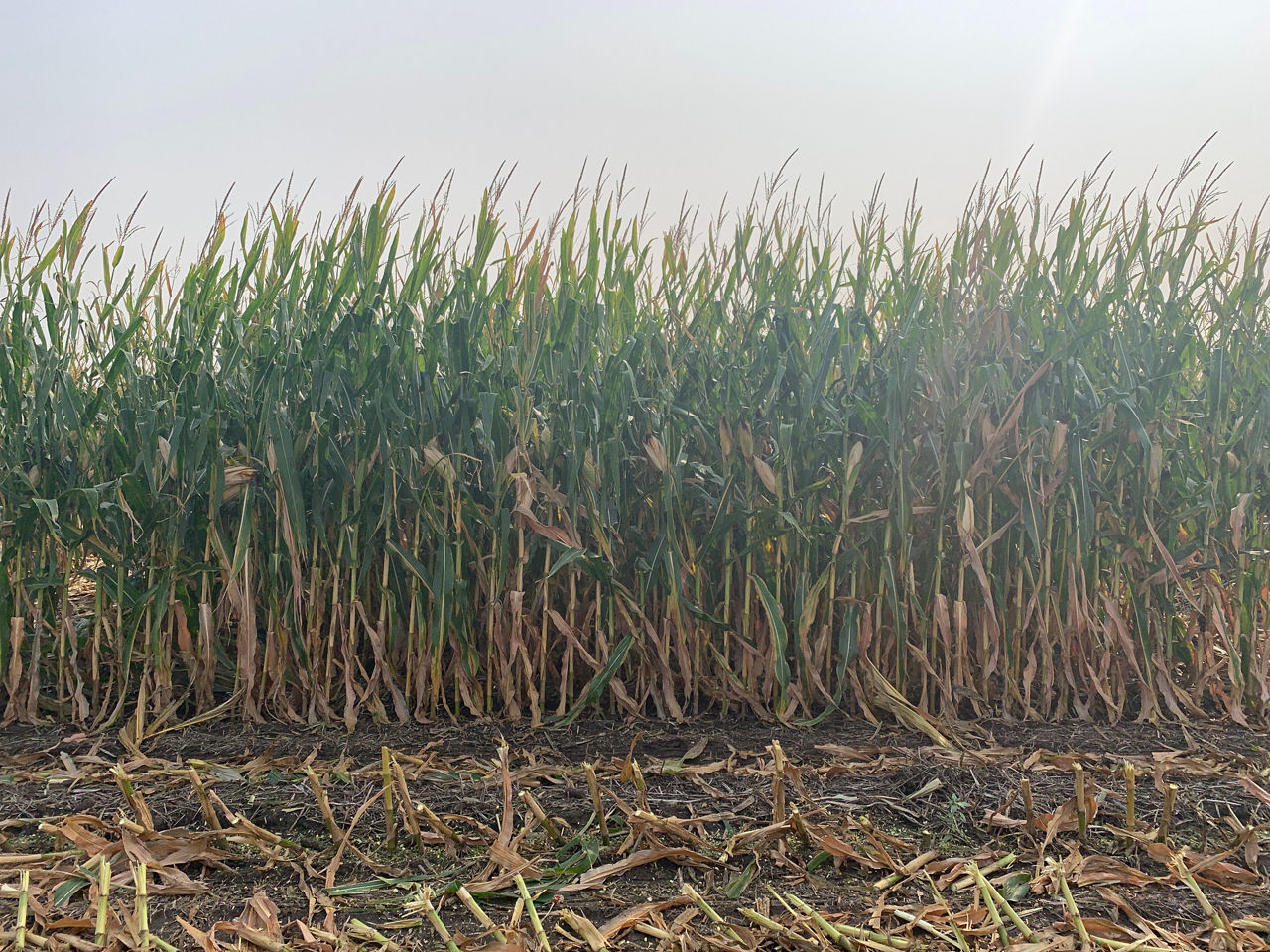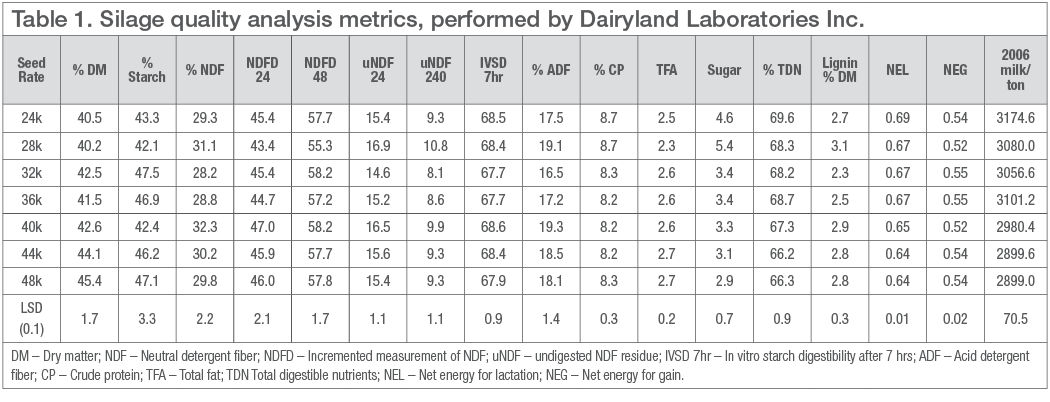5 MIN READ
Corn Silage Response to Seeding Rate
October 15, 2020
TRIAL OBJECTIVE
Corn silage is a popular forage for ruminant animals because it is high in energy and digestibility.
Maximizing tonnage, while maintaining quality, is a key factor for farmers growing corn for silage.
The objective of this study was to determine the effect of seeding rate on corn silage tonnage and quality.
RESEARCH SITE DETAILS
| Location | Gothenburg, NE |
| Soil Type | Hord silt loam |
| Previous Crop |
Soybeans |
| Tillage Type |
Strip-tillage |
| Planting Date | 4/28/20 |
| Harvest Date | 9/22/2020 |
| Potential Yield (bu/acre) |
250 |
| Seeding Rate (seeds/acre) |
24K, 28K, 32K, 36K, 40K, 44K, 48K |
This study was designed as a randomized complete block with five replications of the seven seeding rate treatments.
A 113-day relative maturity (RM) corn product was planted in 30-inch row spacing at 24,000, 28,000, 32,000, 36,000, 40,000, 44,000, and 48,000 seeds/acre.
Corn was sprinkler irrigated. Fertility included 100 lb N/acre applied with a streamer bar on 4/27/20, and 90 lb N/acre and 15 lb S/acre applied with 360 Y-DROP® applicators on 6/24/20. Weeds were controlled as needed and no fungicides or insecticides were applied.
Silage was harvested at approximately half milk-line using a silage chopper and total biomass was collected and weighed. A subsample of the freshly-chopped material was collected and sent to Dairyland Laboratories Inc. for silage quality analysis.
UNDERSTANDING THE RESULTS



For this trial, average silage yield was significantly higher for seeding rates at and above 32,000 seeds/acre compared to seeding rates at and below 28,000 seeds/acre. There was no significant difference in average silage yields among seeding rates greater than 32,000 seeds/acre (Figure 2). Results were different from research conducted in 2019 where the highest tonnage was observed at 48,000 seeds/acre with no significant differences in tonnage between 40,000, 44,000, and 48,000 seeds/acre (see page 29 of the 2019 Central Plains Field Research book).
Seeding rate impact on silage quality varied in all parameters tested (Table 1). However, the planting rate of 36,000 seeds/acre resulted in significantly higher milk per ton of silage compared with the higher seeding rates of 40,000 seeds/acre or more, indicating that it was the best balance between tons/acre (quantity) and milk/ton (quality) for this study.
KEY LEARNINGS
Using a seeding rate of 32,000 seeds/acre provided the highest tonnage in 2020 while 48,000 seeds/acre provided the highest tonnage in 2019. Weather variability happens between years but a seeding rate below 32,000 seeds/acre consistently provided lower tonnage in both 2019 and 2020.
Producers should work with their local seed sales team to choose a corn product and seeding rate that optimizes their production system.